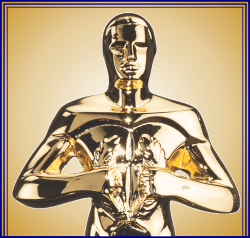
|
|

|

|
|

|
| PRODUCT INDEX > PLAQUE INDEX > PATENT PLAQUES | . |
To invent, you need a good imagination and a pile of junk. |
|
| Thomas A. Edison US inventor (1847 - 1931) |
|
| ITEM# | DESCRIPTION | 1 | 2 | 3-4 | 5-12 | 13-24 | 25-49 | 50+ |
| W812-PAT1 | 8" x 12" Walnut Patent Plaque | $185.00 | $170.00 | $135.00 | $115.00 | $94.00 | $85.00 | $80.00 |
| W812-PAT2 | ||||||||
| Recognize inventors for their accomplishments with these beautifully silk-screened awards. On W812-PAT1, the top plate (6" x 8") contains the old-fashioned certificate design of patents with a re-creation of the "official Gazette" information in the center. On W812-PAT2, the top plate (6" x 8") uses the newer certificate design of patents with a modified version of the "official Gazette" information. The issue date is handsomely engraved in lower right corner. The bottom plate is for personalization and/or copy of your choice. Specify polished silver or polished gold plates. Set-up and artwork/typesetting charges apply. PLEASE CALL OR E-MAIL TO DISCUSS THE RIGHT DESIGN FOR YOUR INVENTION OR RECOGNITION PROGRAM. | ||||||||
U.S. Patent & Trademark Home Page

The patent law specifies the general field of subject matter that can be patented and the conditions under which a patent may be obtained.
In the language of the statute, any person who “invents or discovers any new and useful process, machine, manufacture, or composition of matter, or any new and useful improvement thereof, may obtain a patent,” subject to the conditions and requirements of the law. The word “process” is defined by law as a process, act or method, and primarily includes industrial or technical processes. The term “machine” used in the statute needs no explanation. The term “manufacture” refers to articles which are made, and includes all manufactured articles. The term “composition of matter” relates to chemical compositions and may include mixtures of ingredients as well as new chemical compounds. These classes of subject matter taken together include practically everything which is made by man and the processes for making the products.
The Atomic Energy Act of 1954 excludes the patenting of inventions useful solely in the utilization of special nuclear material or atomic energy for atomic weapons.
The patent law specifies that the subject matter must be “useful.” The term “useful” in this connection refers to the condition that the subject matter has a useful purpose and also includes operativeness, that is, a machine which will not operate to perform the intended purpose would not be called useful, and therefore would not be granted a patent.
Interpretations of the statute by the courts have defined the limits of the field of subject matter which can be patented, thus it has been held that the laws of nature, physical phenomena and abstract ideas are not patentable subject matter.
A patent cannot be obtained upon a mere idea or suggestion. The patent is granted upon the new machine, manufacture, etc., as has been said, and not upon the idea or suggestion of the new machine. A complete description of the actual machine or other subject matter for which a patent is sought is required.
 |
|
FOR PERSONAL SERVICE, YOU CAN CALL CLASSIC DESIGN AWARDS AT 847-470-0855.
Copyright © 2000-2020 Classic Design Awards, Inc.. All rights reserved. Prices subject to change without notice. Revised:
11/27/21